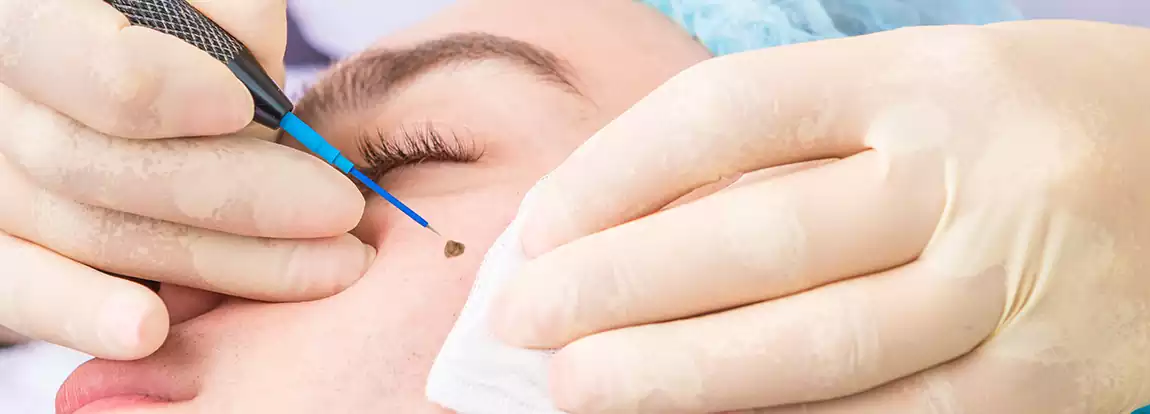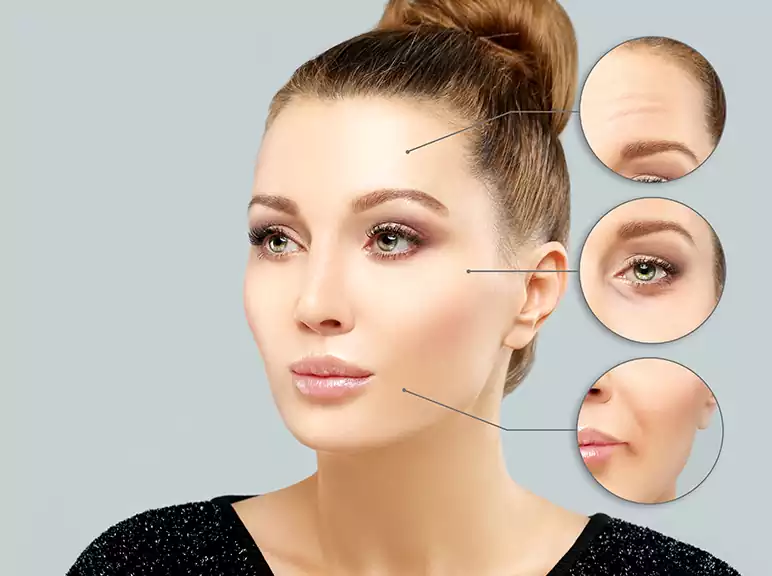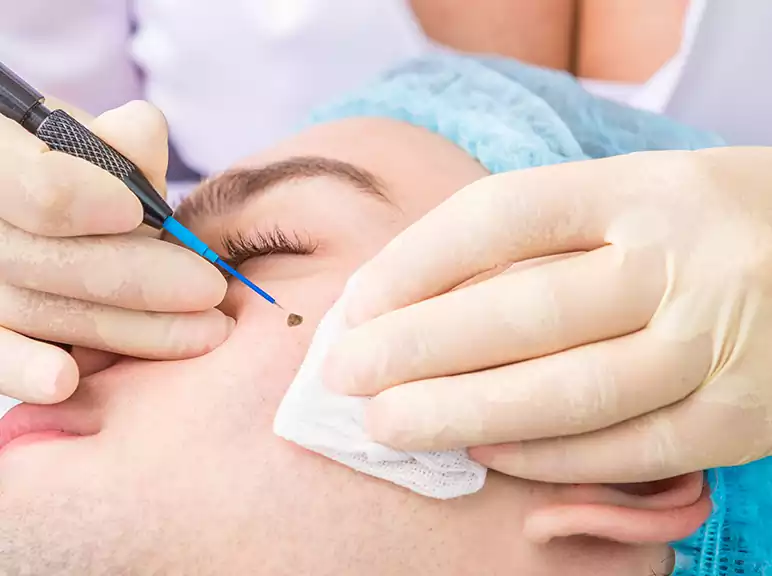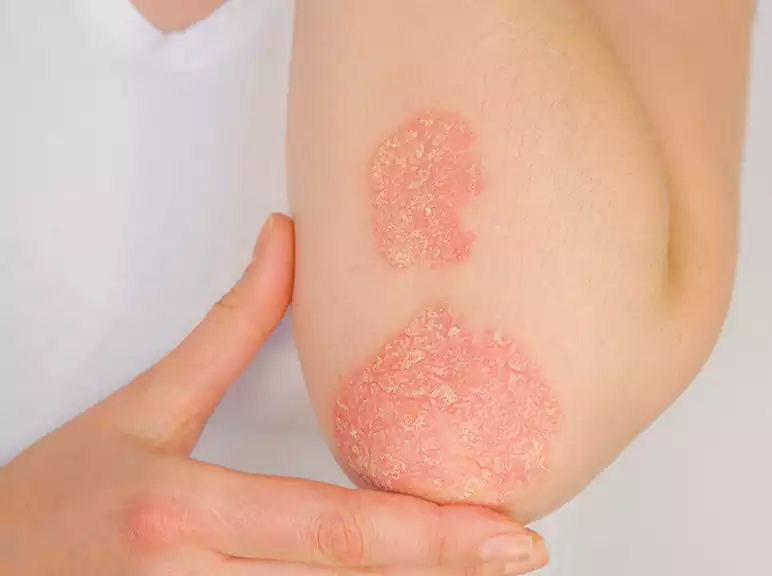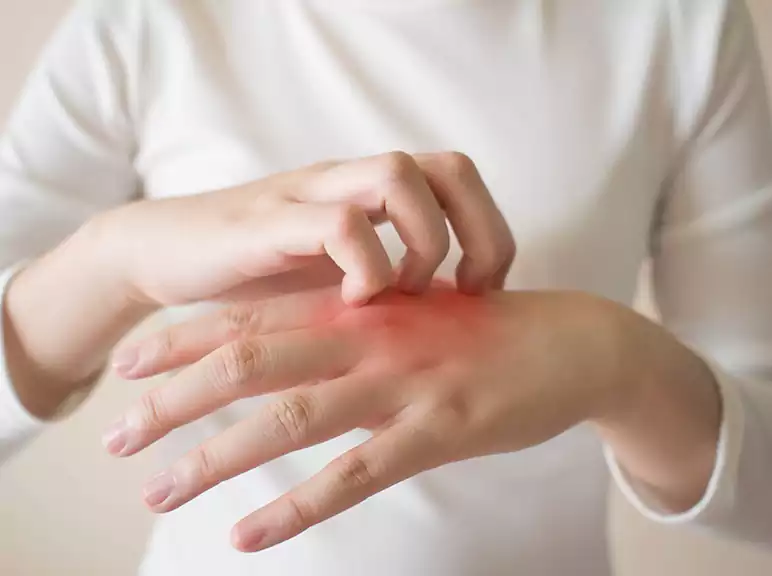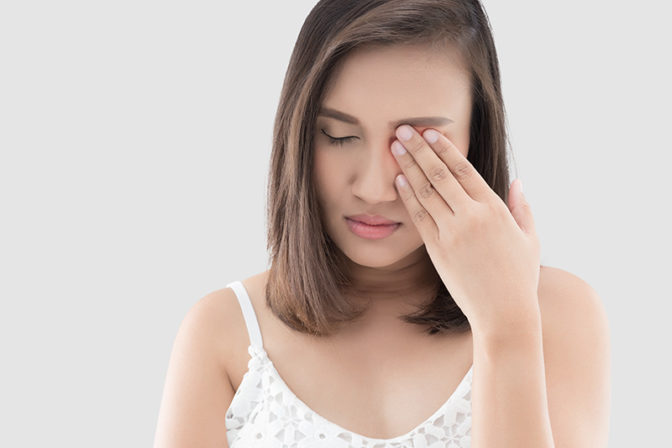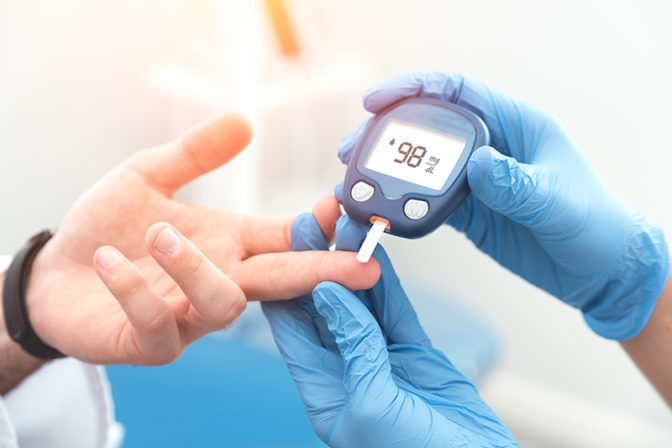Moles
Moles are small and coloured spots on the skin. Most people have them, and they usually have nothing to worry about unless they change size, shape or colour. Moles are skin growths which are made up of cells which produce colour (pigment). A mole may appear anywhere on the skin, alone or in groups. Most people have a few moles in their first 20 years of life. They are usually brown, but may be black, blue or flesh-coloured. Often moles are harmless and do not cause pain or other symptoms unless you rub/squeeze them or bump into something. Skin tags are tiny soft pieces of skin that are stuck to a thin stem. Most of the time, they appear on the neck, armpits, upper trunk, and body folds. The cause of skin tags has not been found. They are harmless.
Why remove a mole or skin tag?
Most skin tags and moles do not need treatment. But sometimes individuals want to get them removed for cosmetic reasons or because they cause discomfort if they get caught in jewellery or rub against clothing. Check with a doctor if you have a mole that looks different from other moles. A biopsy of the mole may be done, which means removing the mole and sending it to a laboratory for cancer testing.
Remove of moles and skin tags by the doctors
A doctor may remove a mole or skin tag in any of these ways:
- Cutting it off. Skin tags may be snipped off with surgical scissors or a scalpel. Certain moles can be “shaved” off flush with the skin. Other moles may have cells which are underneath the skin, so the doctor may make a deep cut to remove the entire mole and to prevent it from growing again. This cut might require stitches.
- Freezing it with liquid nitrogen. The doctor will spray or swab a tiny amount of super-cold liquid nitrogen on the mole or skin tag. You might get a small blister where the mole or skin tag was, but it will heal on its own.
- Burning it. An electric current is passed using a wire that becomes hot and is then used to burn the upper layers of the skin. One may require more than one treatment to remove the mole. Skin tags are removed by burning the narrow stem that attaches them to the skin. The heat helps to prevent bleeding.
The procedure may cause a slight pain, but the doctor will numb the area with anaesthesia before the procedure. If the person has any bleeding, the doctor might apply a medicine to stop the bleeding. These procedures usually leave no marks or scars.
Removal of moles and skin tags at home
Home remedies, for example, using nail clippers to cut off skin tags or lotions and pastes to remove moles, can cause infection, scarring and bleeding. And a doctor must check moles before its removal. It’s much safer to get moles or skin tags removed by a doctor.
Most moles are harmless.
- Most moles are round or oval-shaped, with a smooth edge
- They may be flat or raised and might feel smooth or rough
- Sometimes they have hair growing from them
- Moles are darker on dark skin
It is usual for:
- babies to have moles at birth
- new moles to appear in children and teenagers
- moles to disappear or fade as you grow older
- moles tend to get darker in pregnancy
When a mole could be serious
Some moles may be a sign of melanoma, a type of skin cancer.
Signs of melanoma include:
- A mole that has already changed its colour or has more than two colours
- A mole with uneven borders
- A mole that’s itching, bleeding, crusting or raised
See our dermatologist if you notice a change in a mole.
It is essential to get a new or existing mole checked if it:
- changes its shape or looks uneven
- changes its colour, gets darker or has more than two colours
- starts itching, flaking, crusting or bleeding
- gets larger or raised from the skin
These changes may happen over weeks or months.
How to prevent cancerous moles
UV light from the sun may increase the chance of a mole becoming cancerous. If a person has many moles, they need to be extra cautious in sunlight. It is vital to check moles regularly for any changes.
There are particular things one must do to protect their moles from sun damage, especially during summer.
- Stay in the shade from around 10 am and 3 pm, when sunlight is maximum
- Cover your skin with clothes – wear sunglasses and a hat if you have moles on the face
- Apply a high-factor sunscreen (minimum SPF30) regularly and reapply it again after swimming.
- Do not use sunlamps or sunbeds or sunlamps as they use UV light.

